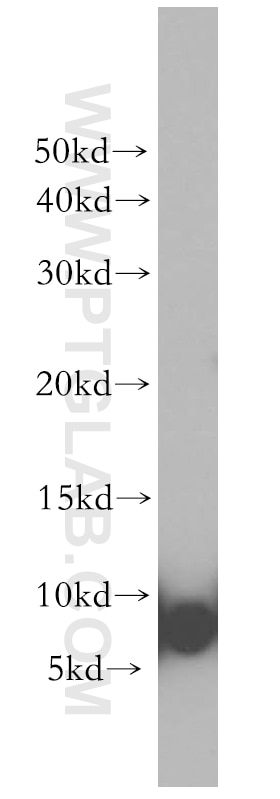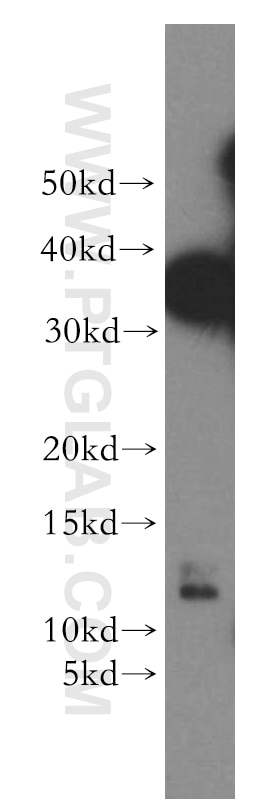Validation Data Gallery
Filter:
Tested Applications
| Positive WB detected in | A2780 cells, HeLa cells, mouse skin tissue |
Recommended dilution
| Application | Dilution |
|---|---|
| Western Blot (WB) | WB : 1:200-1:1000 |
| It is recommended that this reagent should be titrated in each testing system to obtain optimal results. | |
| Sample-dependent, Check data in validation data gallery. | |
Published Applications
| WB | See 3 publications below |
Product Information
12343-1-AP targets S100A3 in WB, ELISA applications and shows reactivity with human, mouse samples.
| Tested Reactivity | human, mouse |
| Cited Reactivity | human, mouse |
| Host / Isotype | Rabbit / IgG |
| Class | Polyclonal |
| Type | Antibody |
| Immunogen | S100A3 fusion protein Ag2995 相同性解析による交差性が予測される生物種 |
| Full Name | S100 calcium binding protein A3 |
| Calculated molecular weight | 12 kDa |
| Observed molecular weight | 7 kDa, 12 kDa |
| GenBank accession number | BC012893 |
| Gene Symbol | S100A3 |
| Gene ID (NCBI) | 6274 |
| RRID | AB_2183761 |
| Conjugate | Unconjugated |
| Form | Liquid |
| Purification Method | Antigen affinity purification |
| UNIPROT ID | P33764 |
| Storage Buffer | PBS with 0.02% sodium azide and 50% glycerol , pH 7.3 |
| Storage Conditions | Store at -20°C. Stable for one year after shipment. Aliquoting is unnecessary for -20oC storage. |
Protocols
| Product Specific Protocols | |
|---|---|
| WB protocol for S100A3 antibody 12343-1-AP | Download protocol |
| Standard Protocols | |
|---|---|
| Click here to view our Standard Protocols |
Publications
| Species | Application | Title |
|---|---|---|
Front Cell Dev Biol Hypoxia-immune-related microenvironment prognostic signature for osteosarcoma | ||
PLoS One Multiple roles of integrin-linked kinase in epidermal development, maturation and pigmentation revealed by molecular profiling. | ||
DNA Cell Biol miR-1 Regulates Differentiation and Proliferation of Goat Hair Follicle Stem Cells by Targeting IGF1R and LEF1 Genes. |


